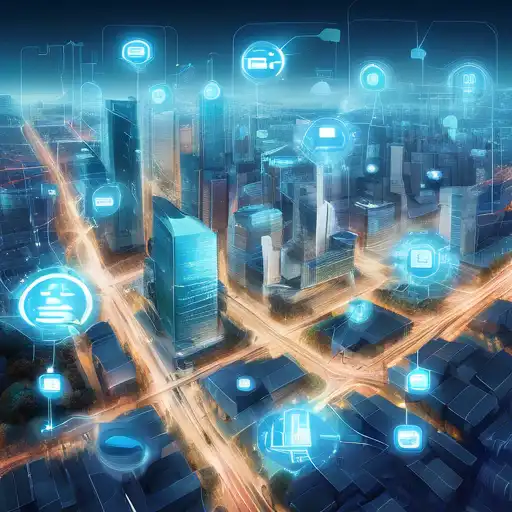Introduction to IoT in Smart Cities
The Internet of Things (IoT) is revolutionizing the way cities operate, making them smarter, more efficient, and more responsive to the needs of their inhabitants. By integrating IoT devices and technologies, urban areas are transforming into smart cities, where data and connectivity improve the quality of life for everyone.
Key Components of IoT in Smart Cities
Smart cities rely on several key components of IoT to function effectively. These include:
- Sensors and Devices: These collect data from the environment, such as air quality levels, traffic patterns, and energy usage.
- Connectivity: High-speed internet and wireless networks enable devices to communicate and share data seamlessly.
- Data Analytics: Advanced algorithms analyze the collected data to identify trends, predict issues, and optimize city operations.
- User Interfaces: Apps and dashboards allow citizens and city officials to interact with IoT systems, making informed decisions based on real-time data.
Benefits of IoT in Smart Cities
The implementation of IoT in smart cities offers numerous benefits, including:
- Improved Public Safety: IoT devices can monitor crime hotspots and alert authorities to potential threats, enhancing security.
- Efficient Traffic Management: Smart traffic lights and sensors reduce congestion and improve commute times.
- Environmental Sustainability: IoT helps in monitoring and reducing pollution, conserving water, and optimizing energy use.
- Enhanced Public Services: From smart street lighting to waste management, IoT improves the efficiency and reliability of city services.
Challenges and Considerations
Despite its advantages, the integration of IoT in smart cities comes with challenges. Privacy concerns, data security, and the high cost of implementation are significant hurdles that need to be addressed. Additionally, ensuring interoperability between different IoT systems and devices is crucial for seamless operation.
Future Prospects
The future of IoT in smart cities is bright, with continuous advancements in technology paving the way for more innovative solutions. As cities become more connected, the potential for improving urban living is limitless. From autonomous vehicles to AI-powered city planning, the possibilities are endless.
For more insights into how technology is shaping urban environments, check out our articles on Digital Transformation and Urban Development.
Conclusion
The role of IoT in smart cities is transformative, offering solutions to many urban challenges while enhancing the quality of life for residents. As technology evolves, so too will the capabilities of smart cities, making them more efficient, sustainable, and livable for future generations.
